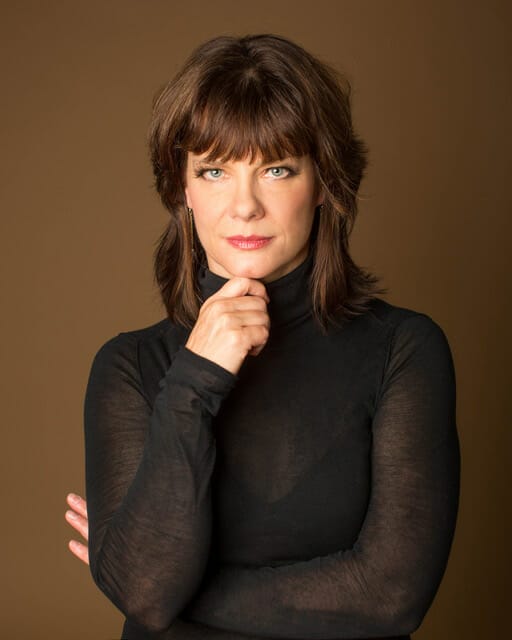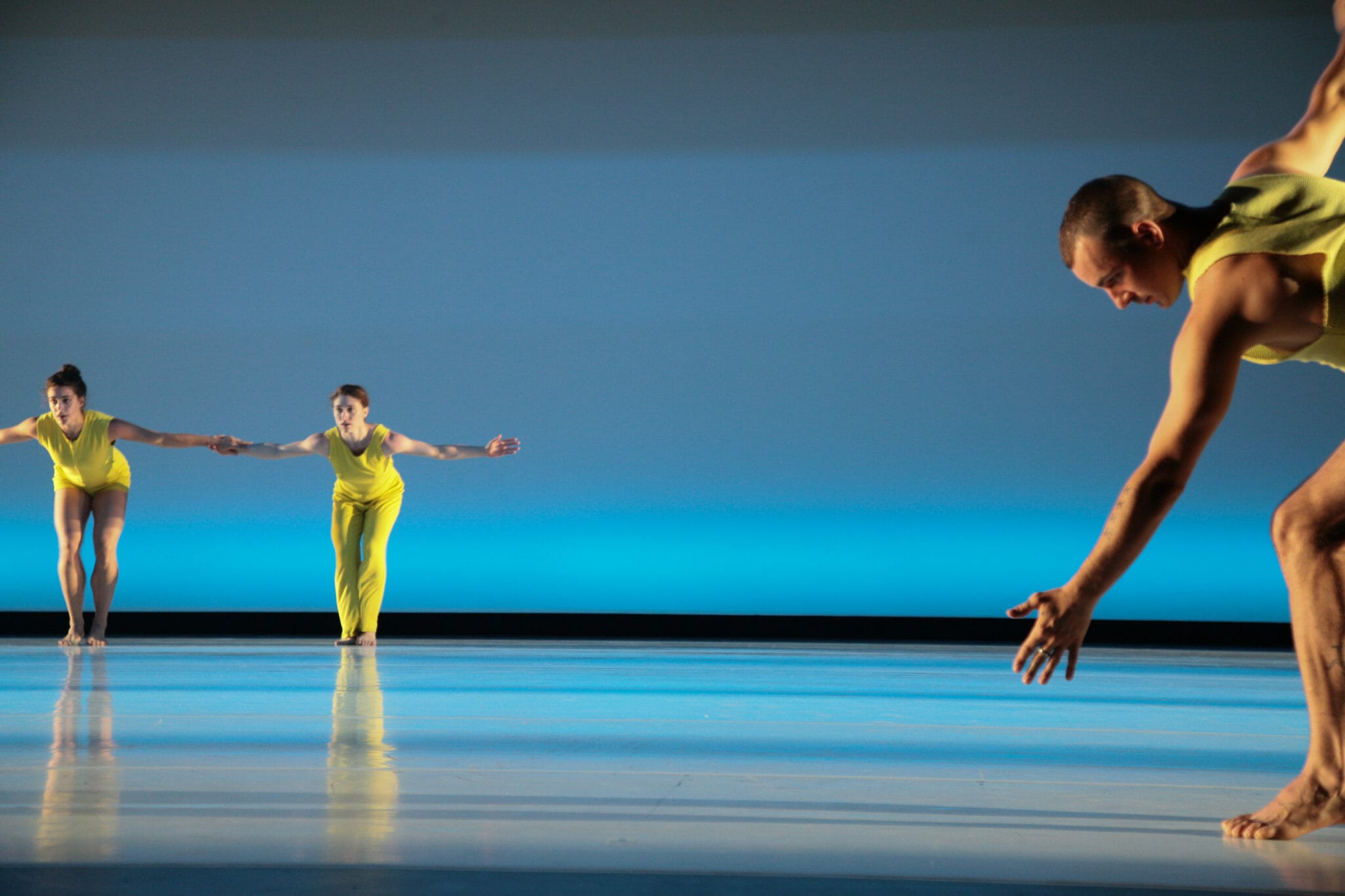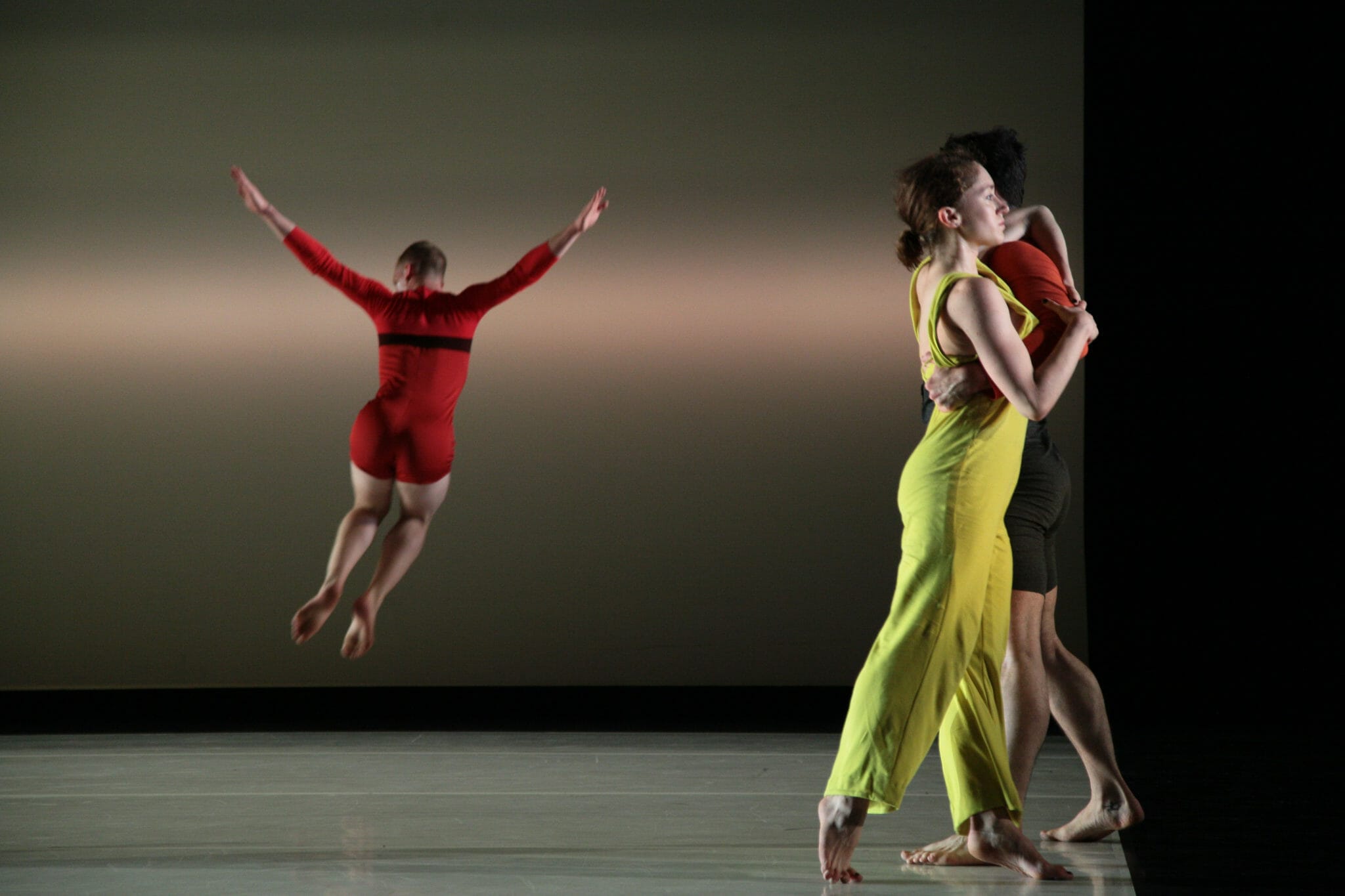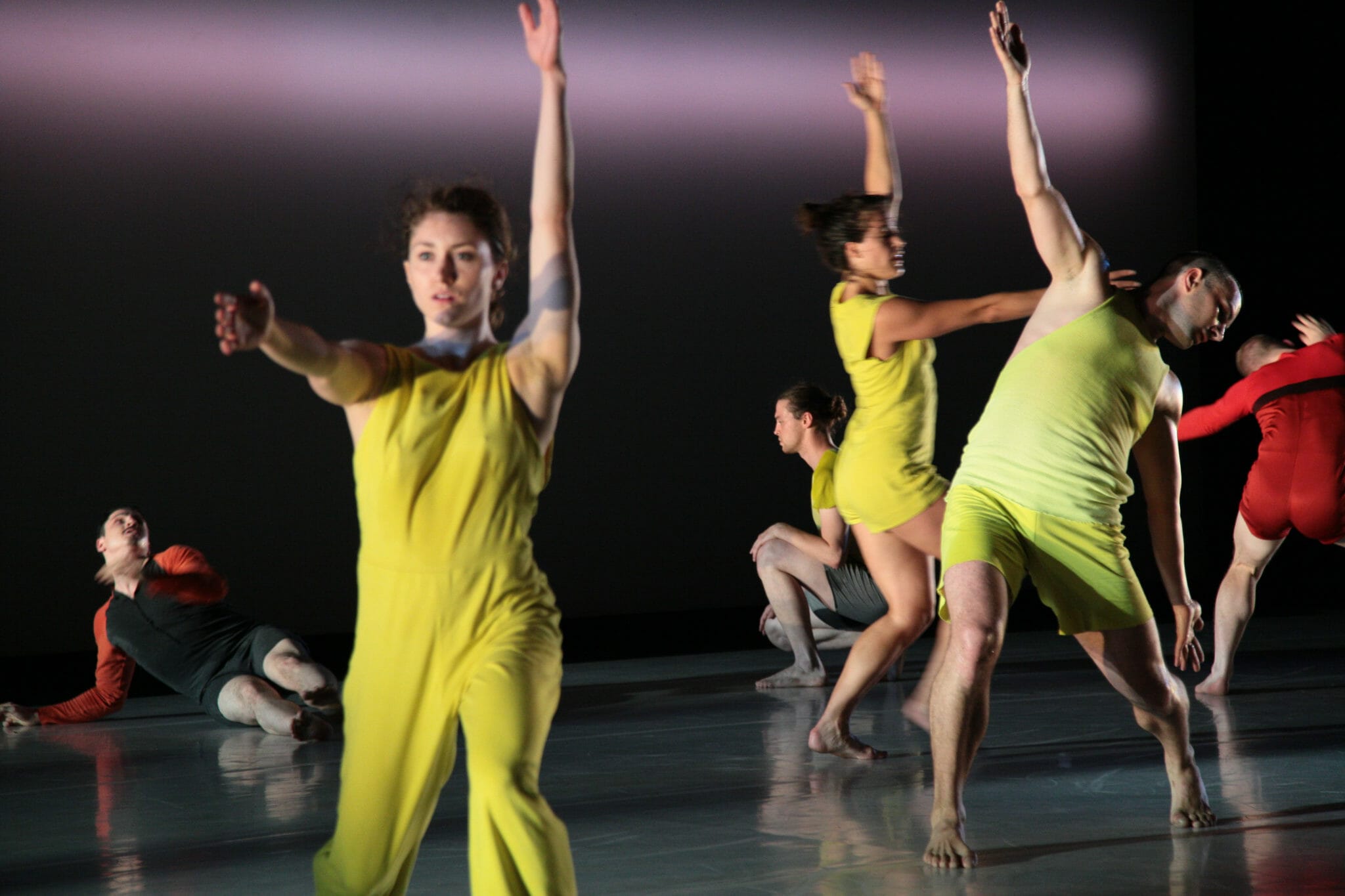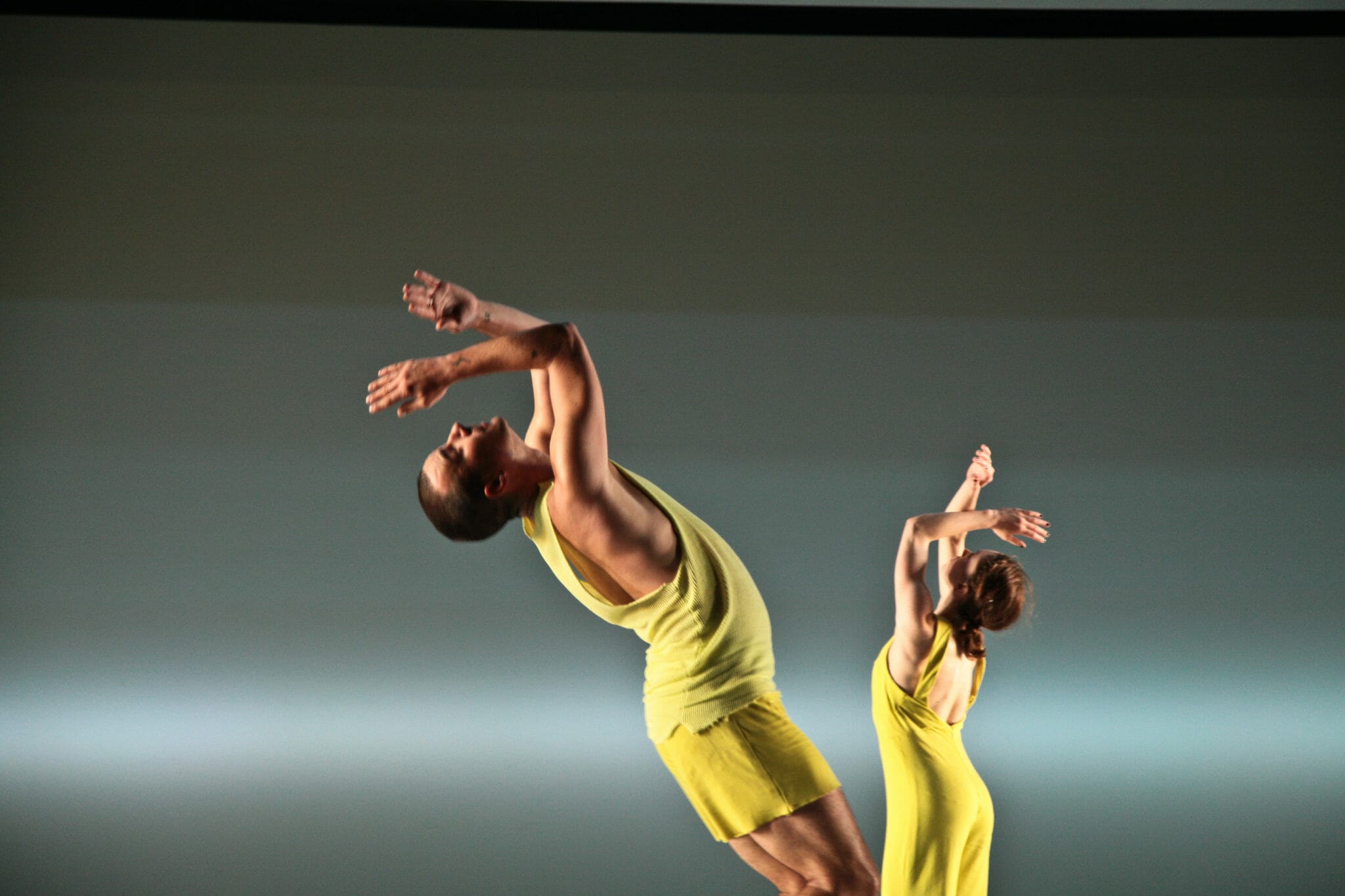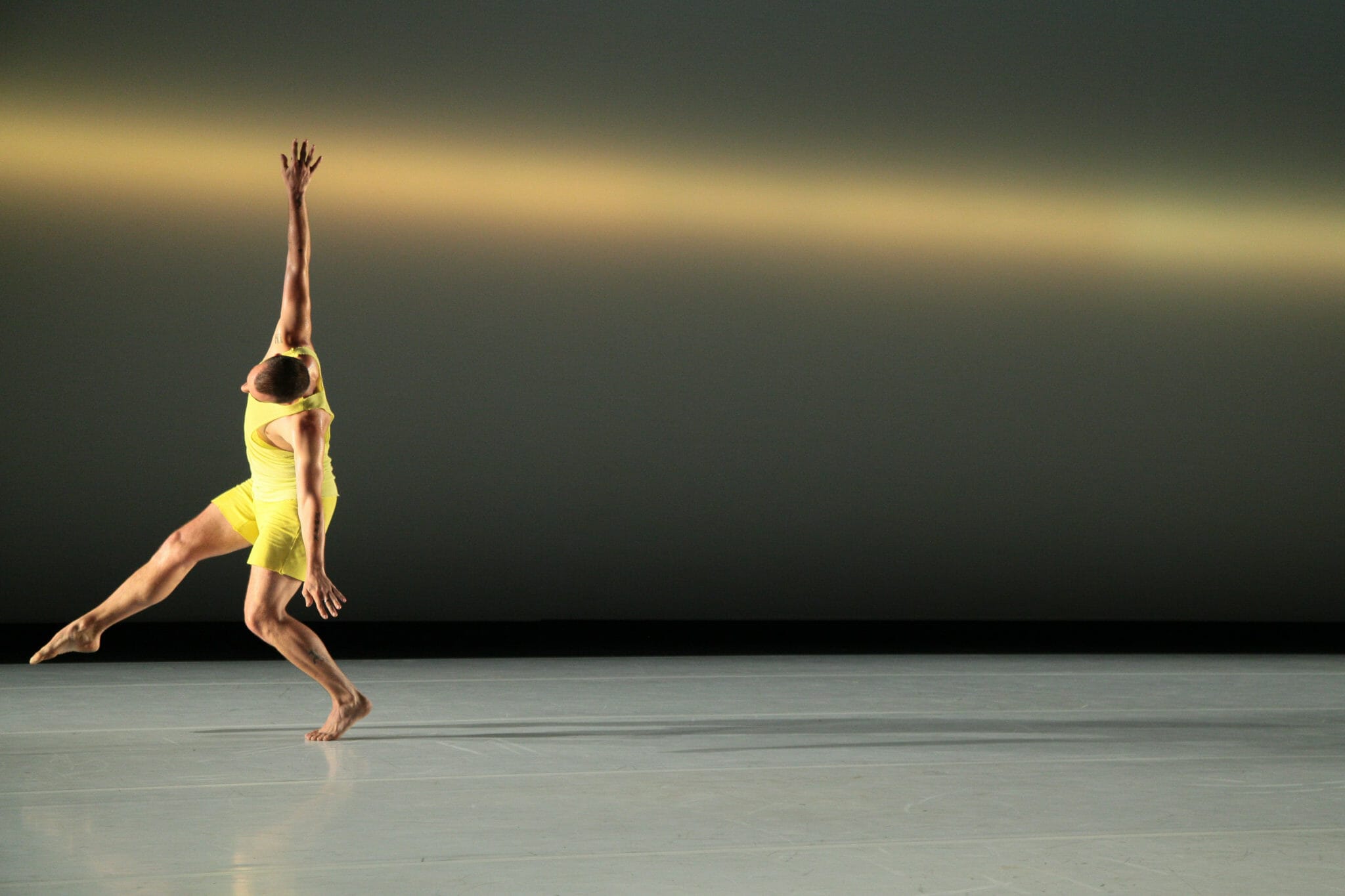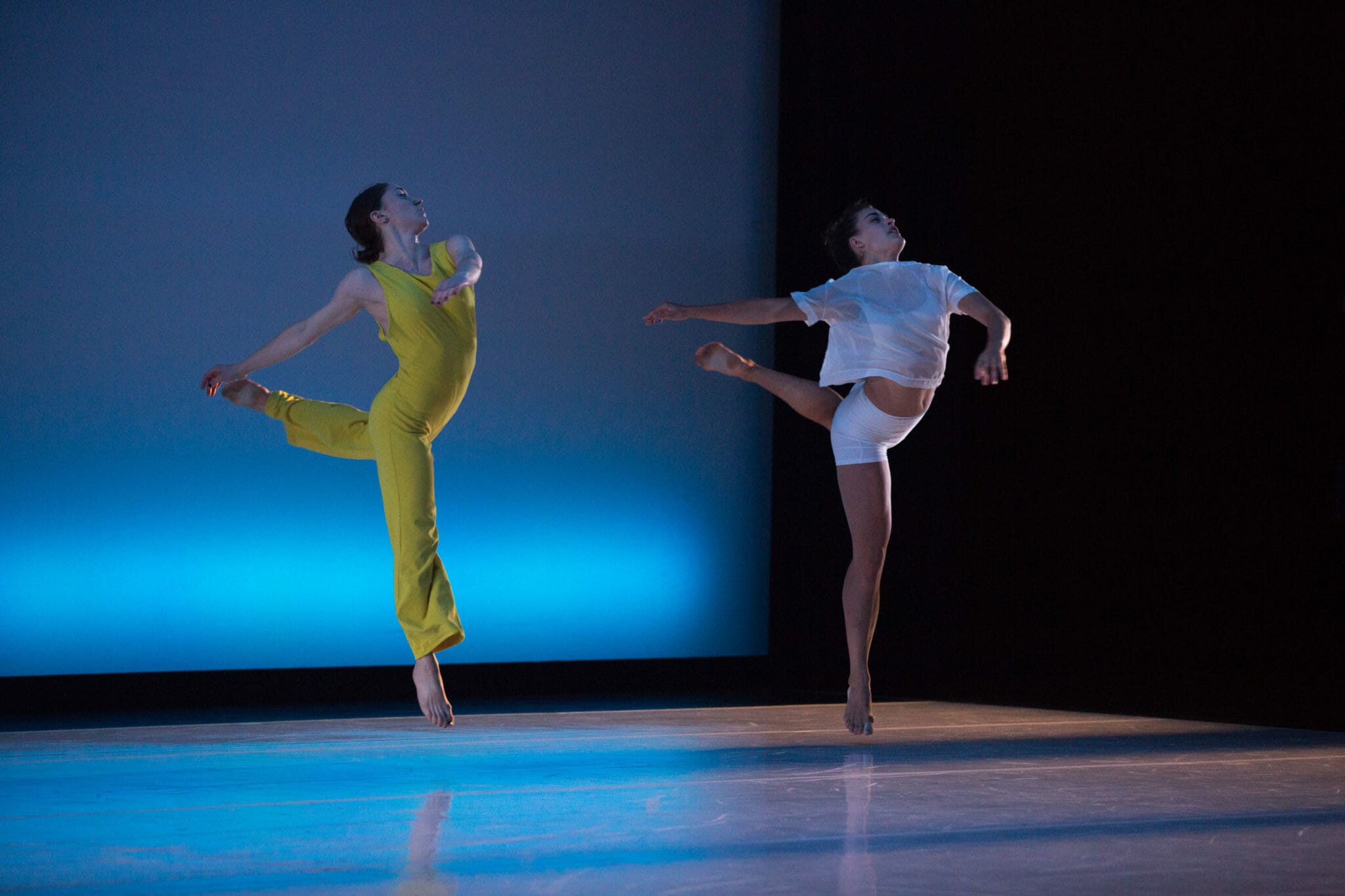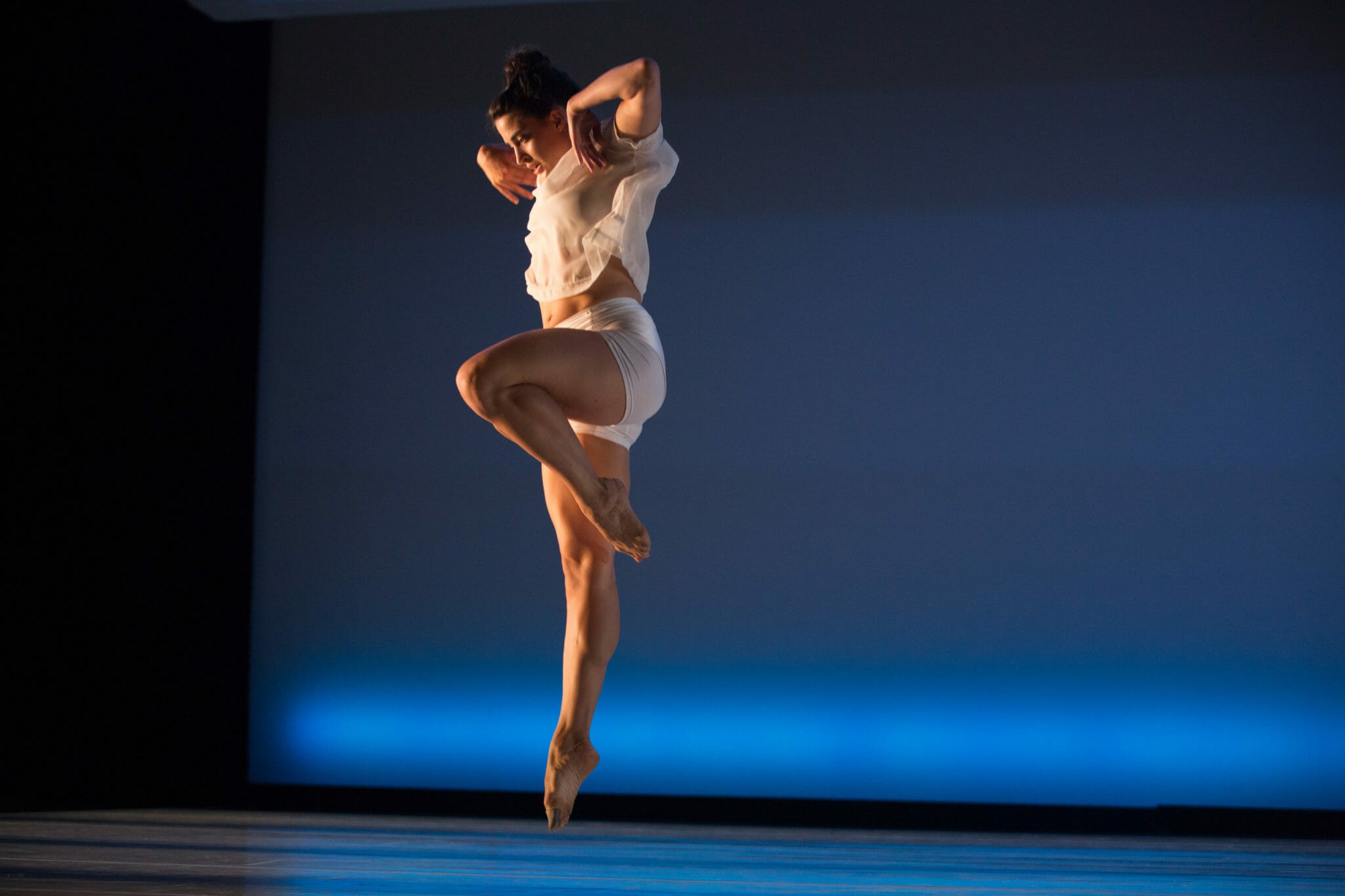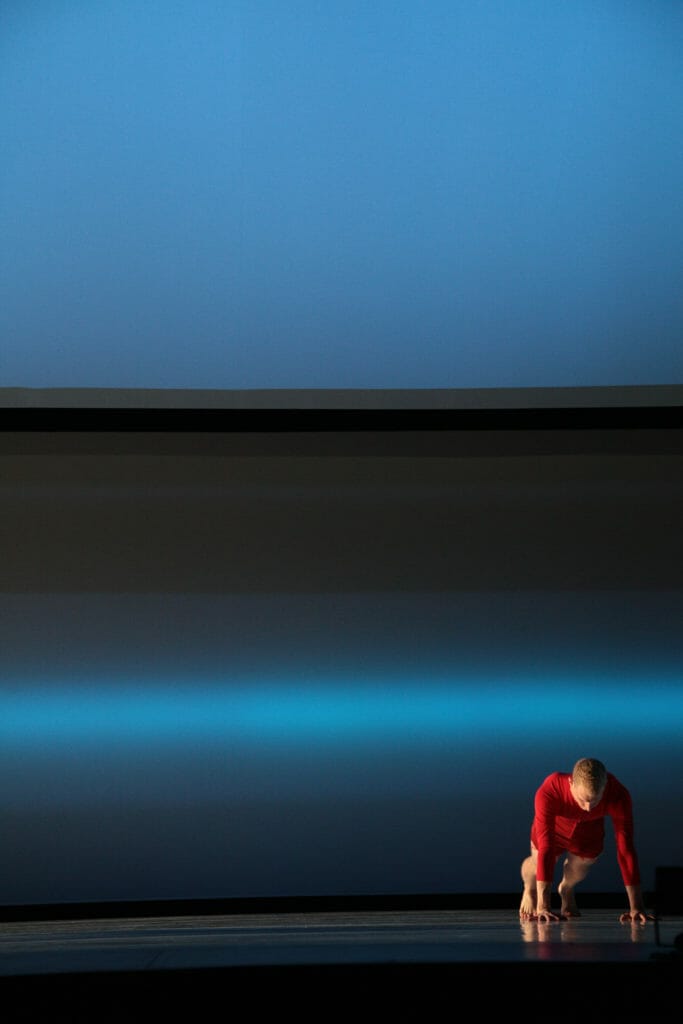The Dance Center of Columbia College Presents Liz Gerring Company
The Dance Center of Columbia College’s 2016-17 season closes with the presentation of Liz Gerring’s Horizon. Hailing from New York, and founded in 1998, The Liz Gerring Company explores “non-narrative, abstract movement, often derived from natural gesture.” The company is making its Chicago area debut this weekend.
Horizon
Horizon begins with two women, one wearing a yellow jumpsuit and one in white shorts with a red tank and a translucent flowy white t-shirt, energetically dancing to Michael Schumacher’s wide-ranging sound scape. The wings of the Dance Center stage have been pulled back so that the side lights and black brick walls are visible and the performance space is framed with a white Marley floor, white cyclorama, and white ceiling box that becomes a luminescent plane. The white set makes Liz Prince’s primary colored costumes pop.
The seven dancers performing Horizon begin entering and exiting the space forming trios, duets, and quartets, expertly exchanging movement and phrases. Repeated lunges, battements (high kicks), somersaults, and jumps are punctuated with moments of stillness and one-legged balances that challenge the viewer to register ideas as fast as the dancers are performing them, and then to move on to the next image.
The Gerring company members define the geometry of the Dance Center stage marking out the length, depth, periphery, and diagonals of the space with a variation of movement motifs that are picked up and passed off like a football. At one point two dancers repeatedly jump backwards together dropping the movement only to have other passing dancers continue the jumping and in turn pass it off to others. In addition, still poses are juxtaposed against the frenetic dancing, and simple pedestrian tasks such as crawling, maintaining a push-up position and kneeling on one knee give the viewer some repose. Dancers are often so completely drawn into their own movement phrases that their coming together appears as if by coincidence. At one point a dancer pulsing her arms forward and back is lifted, and while being carried around the stage never drops her propulsive arm movement despite being shifted from shoulder to shoulder and then from facing sideways to downwards by her partners.
Colors
Throughout the many dance phrases and motifs, the stage set colors are changing. The white box becomes pink, blue, green, aqua, red, purple, etc. With each color change there is generally a shift in the sound from propulsive to ambient to electronic along with a shift in the choreography. As with the dancers passing the movement phrases throughout the piece, the changing colors seem to pass a mood that is reflected in the sound score.
One of the final energetic sections features dancers rolling and releasing a leg in a high-powered kick upwards across the length of the stage. While several dancers are rolling, others enter jumping and propelling their bodies across the space as others find places to be still for a few moments before entering the fray of movement once again. This fervent, frantic section slowly evolves into five dancers quietly moving forward suspended on relevé and reaching towards the audience. The other two dancers move in and out, as the group of five dissipates one by one leaving fewer and fewer dancers moving on stage as the lights slowly fade out.
Not the Merce Cunningham Model
It appears as if the collaborators for Horizon (Gerring (dance), Schumacher (music), Wierzel (production design), and Chandrashaker (lighting) were working towards the disciplines existing independently of each other. However, unlike the Cage/Cunningham/Rauschenberg collaborations where the independent disciplines often did not encounter each other until the performance, one has the feeling that in this collaboration the various disciplines came together in rehearsal and were massaged, and perhaps even changed, to accommodate one another. The problem occurs in that we are left in a kind of vacuum where the independent disciplines are not sufficiently established enough to stand on their own, and therefore are unable to generate a successful enlargement of their interaction, or the successful surprise and chance effects, of the Cage/Cunningham/ Rauschenberg collaborations. In addition, though Ms. Gerring states the work explores the idea of density, it seems as if the concept is only being explored descriptively, and not analytically. The movement never becomes layered enough, compact enough, crowded enough or thick enough to allow the investigation of density to coalesce into an image, or a space, such as one that might be ascribed to a Jackson Pollack painting.
Read more about choreographer Michelle Kranicke’s thoughts about Merce Cunningham here.
This review is part of Picture this Post's series - CHOREOGRAPHERS' EYES - DANCERS EXPLAIN DANCE. Find more here.
Learn more about dance by seeing dance through dancers eyes in the Picture This Post series, “Choreographers’ Eyes - Dancers Explain Dance”. Watch this video preview of the story here—
Find more Picture This Post dance reviews in the latest roundup — CHOREOGRAPHERS WE LOVE. Also, watch a short preview video here —
When:
Remaining performances--April 8, 2017 7:30
Where:
The Dance Center of Columbia College
1306 S. Michigan Ave
Chicago
Tickets:
$30, with senior discounts
Photos:
Miguel Anaya and Thaddeus Rombauer
